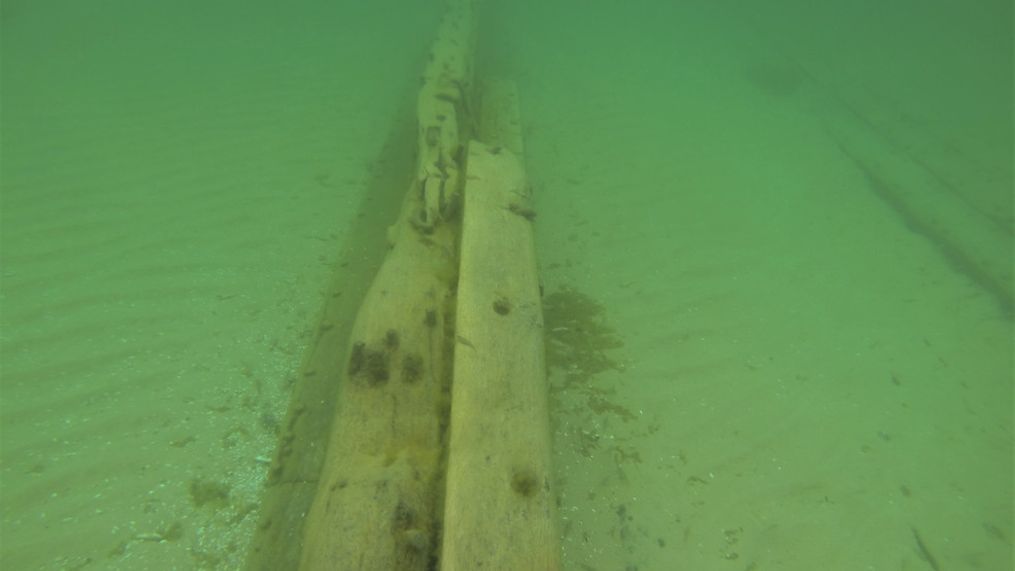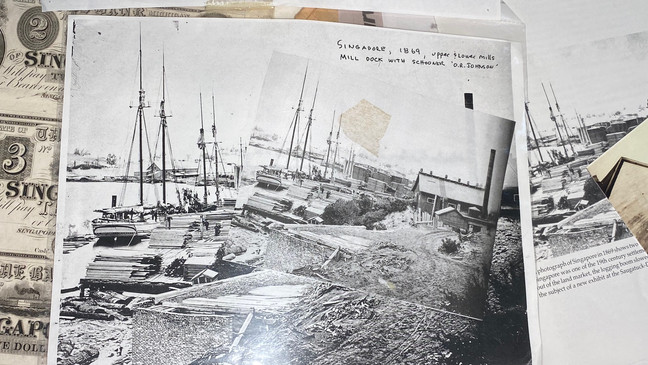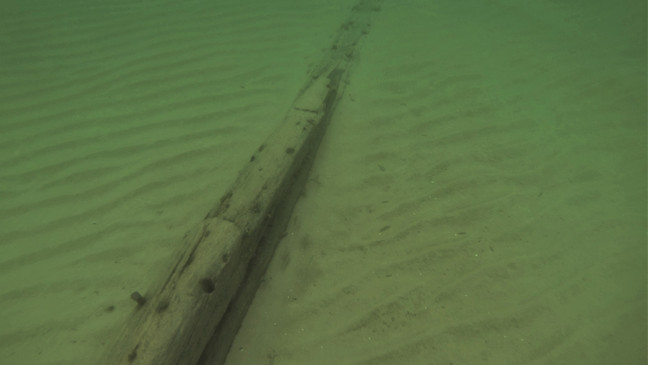Lost shipwreck resurfaces in Lake Michigan nearly 200 years after sinking
A couple believes they've located a once lost shipwreck in the shallow waters of Lake Michigan.
Kevin Ailes and his wife, Amy, share a passion for preserving shipwrecks. "My main focus is preservation," Ailes said. "But in the process of preservation, we come across a lot of information which is quite intriguing to go find something.”
In the last decade, Kevin Ailes has located four shipwrecks once considered lost across the Great Lakes. He now has another wreck to add to the list.
Ailes began researching the wreck of the Milwaukie, a ship that went down in a fierce winter storm near Saugatuck in November of 1842. It's one of the earliest known shipwrecks along the West Michigan lakeshore.
Using historical accounts of where the ship went down, Ailes used archive satellite imagery on Google Earth to scan the area of interest. Water conditions, sun angle and several other factors at the time satellite imagery is captured play a big role.
An archive satellite image from March 2021 revealed just what Ailes was looking for, just a few hundred feet from the shoreline.
“I just couldn’t believe when I saw it there," Ailes said. "You can even see the bow pointing not straight at shore, but about a 45-degree angle at shore.”
With a new point of interest to investigate, the couple first visited the site by boat in the spring of 2022. Using a magnetometer and sonar on board, they verified what had been seen on the satellite scans.
"Every one to two feet, the detector would register a hit, and that matches up with the spikes which hold a ship together," Ailes said. Underwater images reveal what lies against the innermost sandbar along the Saugatuck Dunes State Park shoreline when waves and sand cooperate. "Clearly a keel, a little bit of ribs there," Ailes said. "It’s definitely a shipwreck.”
The dimensions match up to the Milwaukie's 113-foot length, he added. While not much remains of the nearly 200-year-old vessel, the story behind its final resting place is quite the tale.
The sinking of the Milwaukie
According to information provided by the Saugatuck-Douglas History Center, the Milwaukie had just loaded up 400 to 500 barrels of flour at the mouth of the Kalamazoo River when it set off into the night on November 16, 1842.
The Milwaukie and its crew would never make it to its destination of Buffalo, New York.
The crew had allegedly objected to setting sail out of fear a storm was brewing. Some of the accounts allude to folklore from the period, mentioning several rats leaving the ship while previously docked in St. Joseph.
The crew wanted to wait out the storm, but the captain believed the lake was going to ice up and so he didn’t want to hang around any longer," Ailes said. “According to the accounts of the day, there was a mutiny, and possibly a murder.
As some newspapers would claim, the crew allegedly turned on its own captain as the weather suddenly worsened. Temperatures plummeted, the wind shifted to the northwest and blizzard conditions quickly developed.
The wind and harsh waves forced the Milwaukie into a shallow sandbar, not far from shore. According to historical records, only six of the 13 men survived.
“It’s a reminder of how volatile and unpredictable life was on the Great Lakes then, and how in some ways fortunate today to have the forecasting that we do," said Eric Gollannek, director of the Saugatuck-Douglas Historical Center.
A link to Singapore, Michigan
“The sand moves in, and it buries all the buildings, and that’s where you have that legend of an entire town sitting below the big sand dune," said Olivia Foster, an intern with the Saugatuck-Douglas History Center.
Foster has been studying one of Michigan's most famous ghost towns for her thesis. The mill town was established in 1837 along the northernmost bend in the Kalamazoo River near its mouth into Lake Michigan.
"It was never a chartered township with a real government or governing body, school or a church," Foster said. "The population was 200 to 500 at all times; it was small.”
Singapore was established in 1837, making the settlement only six years old when the Milwaukie wrecked less than two miles away. The town eventually depleted its primary resource of lumber, causing its inhabitants to slowly leave as sand enveloped what was left behind.
The blizzard that wrecked the Milwaukie also set off a stretch of harsh winter weather, according to some historical accounts.
"They called it the harsh winter, or the hard winter of 1842, because of the lack of food and just a difficult winter in general," Foster said.
When the ship sank, the barrels of flour on board washed ashore, not far from Singapore.
"This wonderful gift of flour on the beach, albeit a rather highly paid for gift of flour, gave them supplies to get through the winter," Ailes said. “Plus, there was a significant amount of wine on there, too, which I’m sure had a factor in that, as well.”
Conservative estimates place at least 6,000 shipwrecks across the Great Lakes.
Lake Michigan was especially dangerous at the turn of the 20th century, according to Gollannek. “It was in part incredibly deadly because of the length and depth of the lake, so fierce currents could develop, and it was also highly trafficked," Gollannek said.
The wreckage lies at the following GPS coordinates, provided by Ailes: N 42*41'43.86", W 86*12'32.95".
State and federal laws protect shipwrecks on the Great Lakes, so nothing can be touched or removed from the site.




